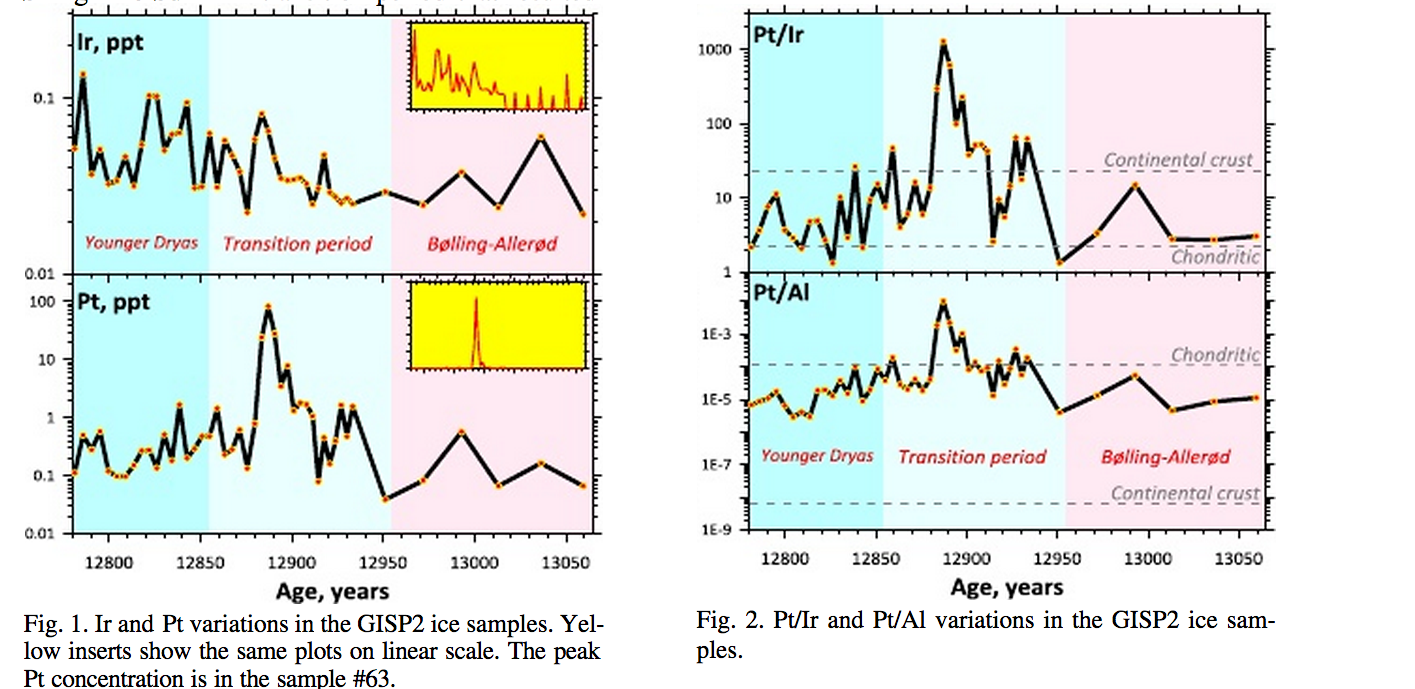Update: As published in PNAS in July, 2013
“The [Younger Dryas Boundary] theory has reached zombie status,” said Professor Andrew Scott from the Department of Earth Sciences at Royal Holloway. “Whenever we are able to show flaws and think it is dead [!], it reappears with new, equally unsatisfactory, arguments. [Sniff!]
– “January 30, 2013, Royal Holloway Press Release two weeks before the Harvard discovery.
Among other causes, the Younger Dryas impact hypothesis [4] is based on observations and is testable. A C-rich layer, exposed in many sites in North America and Europe at or near the YD boundary, is enriched in magnetic grains with Ir, magnetic microspherules, charcoal, soot, carbon spherules, glass-like carbon withnanodiamonds, and fullerenes with extraterrestrial. This has been interpreted as evidence for an impact or aerial blast at ~12,900 years ago. Subsequent studies both cast doubt on [5-12] and found new support for [13-14] the petrographic evidence. However, the invoked markers have never been supported by a geochemical impact signature such as a sharp increase in Ir or other PGE concentrations……..
……..Our results could be explained by the impact of an iron meteorite with low Ir and high Pt con-centrations like Sikhote-Alin (IIAB) or Grant (IIIAB); the former is a large crater-forming meteorite shower. If the Pt peak is caused by an iron meteorite impact, then the observed gradual ingrowth of the Pt concentration in ice over ~25 years requires lifting impactor’s material above the stratosphere and formation of a ring around the Earth. The decay of the Pt signal is consistent with ~5-years lifetime of the dust in the stratosphere. Such an impact could result in a global Pt anomaly. An anomalous 50 cm thick ice layer with 100 ppt Pt would require a sub-km-size iron meteorite to account for the Pt mass-balance.Concluding remark: The main conclusion of our study is the detection of an unusual event during the Bølling-Allerød- YD transition period that resulted in deposition of a large amount of Pt to the Greenland ice.The nature of the event remains uncertain, but our results clearly rule out an impact or airburst of a chondritic bolide. If an impact was involved, the impactor had a very unusual composition deriving froma highly fractionated portion of a proto-planetary core.
Harvard Researchers Discover Evidence for Major ET Impact at Younger Dryas Boundary
https://cosmictusk.com/wp-content/uploads/Large-Pt-anomaly-in-the-Greenland-ice-core-points-to-a-cataclysm-at-the-onset-of-Younger-Dryas.pdf




